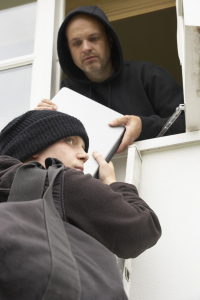People don’t think that spring cleaning involves their computer but believe it or not, your computer can get unorganized very quickly; think about all those junk files and forgotten documents that have been piling up. Keeping your computer organized is easier than it seems. Here are some tips to help prevent your computer from becoming your next major headache:

1. Use folders to organize your desktop.
Your desktop can quickly become littered with shortcuts, duplicate files, and screenshots which can slow down your computer and make it difficult to find what you’re looking for. You can prevent this by creating folders to organize your files and shortcuts. Create a folder on a Mac by right-clicking on the desktop and select “New Folder”; for a Windows-based computer, right-click the desktop and select “New”, then “Folder”. You can easily rename your folder and drag-and-drop files here to help you stay organized.
2. Don’t be afraid to delete unnecessary or duplicate files.
Unused files and copies of documents can take up a lot of space on your computer. The “Downloads” folder is often forgotten about and the files here are usually no longer needed. Save space and improve your computer’s speed by deleting these unnecessary files.
3. Clear your internet browser.
Cleaning your internet browser’s cache and browsing history regularly is a great thing to do. How you do this will vary depending on your browser but you can typically find an option to clear the history under “Options” or “Menu.” Some browsers might ask if you want to clear your cache and cookies too; do this regularly and you can improve your browser speed, as well as keep your computer safer
4. Scan your computer for viruses.
This is really important because scanning your computer for viruses and other issues can not only improve your computer’s performance, it can save your computer’s life! While there are many programs that can scan your computer, I suggest using anti-viruses and anti-malware programs like Malwarebytes and Advance System Care; both are free and easy to download.
5. Back up. Back up. And back up!
One way to make sure your computer stays clean and safe is by backing up your important files and programs onto another hard drive. An external or flash drive is a great option if it has enough memory available. You can even use an external or flash drive to store files from your computer so they don’t take up valuable space.
Hopefully these five easy tips will help keep your computer clean and organized, not to mention save you from some headaches! Please let me know if my tips helped, or if you have any additional suggestions by leaving a comment below.
Source with permission to repost: https://blog.central-insurance.com/2016/05/25/5-tips-to-spring-clean-your-computer/
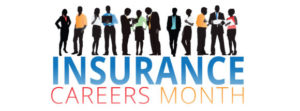

 “Your vehicle is a total loss.” These are words you probably never want to hear from your insurance company. But what does “total loss” really mean?
“Your vehicle is a total loss.” These are words you probably never want to hear from your insurance company. But what does “total loss” really mean?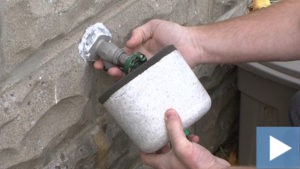 December is here and along with it comes the familiar reminders that winter is quickly approaching. Turn on the radio and Christmas music is blaring, go to the store and see decorations and lights lining the shelves. It’s also that time of year again when you have to prepare your home for freezing temperatures.
December is here and along with it comes the familiar reminders that winter is quickly approaching. Turn on the radio and Christmas music is blaring, go to the store and see decorations and lights lining the shelves. It’s also that time of year again when you have to prepare your home for freezing temperatures. 
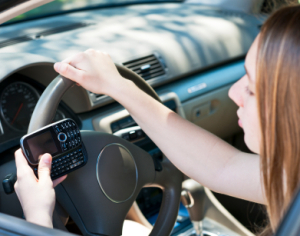 It’s back to school time and for many children, school is already in session. Today as I drove my son to school, I realized how important it is to use extra caution while driving, now that school is in session. This is the time of the year when we say goodbye to the leisurely summer traffic, and start sharing the road with hurried parents, new teen drivers, student pedestrians, and school buses. Not only do we want to send our kids off to school safely each day, but it is equally important that each of us make it to and from work safely. Why not start this school year by sharing the following safety tips from the
It’s back to school time and for many children, school is already in session. Today as I drove my son to school, I realized how important it is to use extra caution while driving, now that school is in session. This is the time of the year when we say goodbye to the leisurely summer traffic, and start sharing the road with hurried parents, new teen drivers, student pedestrians, and school buses. Not only do we want to send our kids off to school safely each day, but it is equally important that each of us make it to and from work safely. Why not start this school year by sharing the following safety tips from the  I am an animal lover, but dogs are my personal favorite. They are great company and it’s in their nature to seek your approval and love. Dogs are said to be “man’s best friend”, but have you ever thought about how your insurance could be affected by the type of dog you decide to own?
I am an animal lover, but dogs are my personal favorite. They are great company and it’s in their nature to seek your approval and love. Dogs are said to be “man’s best friend”, but have you ever thought about how your insurance could be affected by the type of dog you decide to own?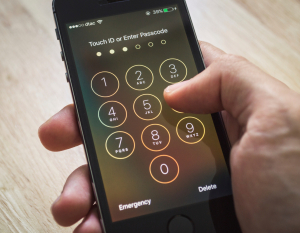 As we move further into the 21st century, technology innovations continue to improve and become more accessible, which means more and more people now own smartphones. Smartphones are more than just an expensive paper weight in your pocket; they’ve become a small computer in your hands. You can do everything from manage your bank account and shop for groceries, to catch imaginary creatures at the park. But the more we use these mobile devices, the more sensitive data they contain and the more we need to protect them. Here are some tips to keep your smartphone, and the information on it, secure:
As we move further into the 21st century, technology innovations continue to improve and become more accessible, which means more and more people now own smartphones. Smartphones are more than just an expensive paper weight in your pocket; they’ve become a small computer in your hands. You can do everything from manage your bank account and shop for groceries, to catch imaginary creatures at the park. But the more we use these mobile devices, the more sensitive data they contain and the more we need to protect them. Here are some tips to keep your smartphone, and the information on it, secure: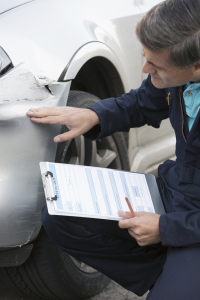 Have you ever wondered what the body shop technician is looking at when they are writing up an estimate for damages to your vehicle? You may expect the estimate to come back at “this number” but are shocked to see it is actually “that number.” Why is it so different from what you thought? Let me try to shed some light on how damages are estimated.
Have you ever wondered what the body shop technician is looking at when they are writing up an estimate for damages to your vehicle? You may expect the estimate to come back at “this number” but are shocked to see it is actually “that number.” Why is it so different from what you thought? Let me try to shed some light on how damages are estimated.